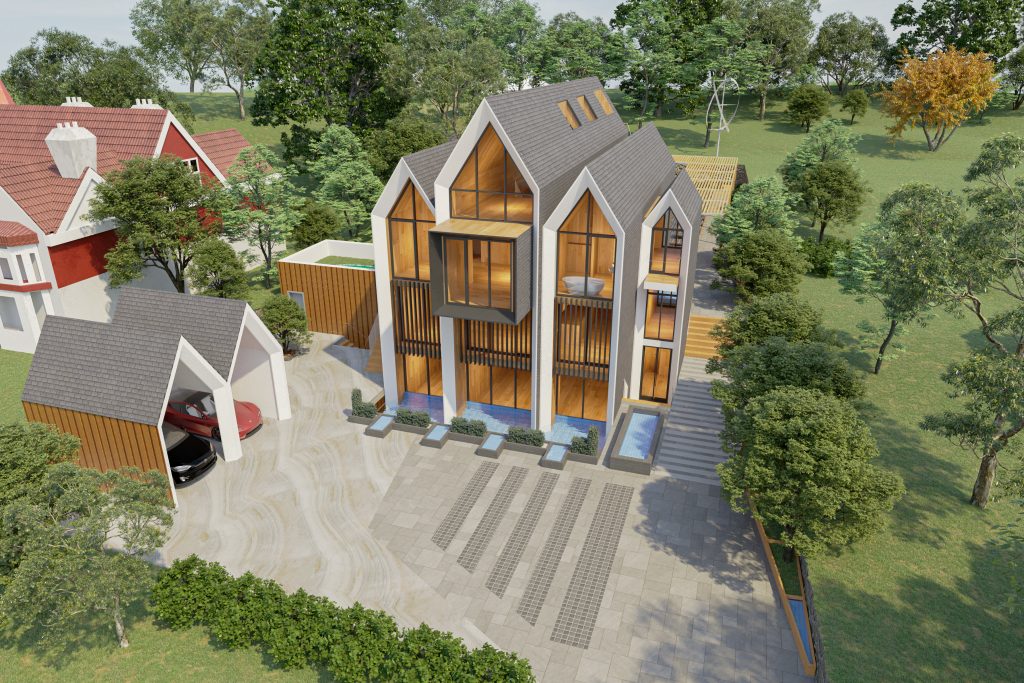Why Zero Carbon Design is Important for the Future of Construction
Zero carbon design is the process of designing and constructing structures that over their lifespan will have no carbon footprint. In some cases, they may even produce more energy than is used.
As buildings play such a large role in global carbon emissions, the importance of leaning towards a more sustainable and zero carbon approach cannot be understated, and the sooner these initiatives become widespread, the better for the planet.
But why is zero carbon design in construction so important?
Let’s take a look.
The Carbon Emissions of Buildings
There are several reasons buildings and construction accounts for around 36% of global energy use.
There are three sectors that account for this usage.
- Energy Consumption – If you think of your own home, or the last hotel you stayed at, you will find many instances where energy is used. Buildings are packed with appliances such as lights, heating and cooling systems, and electrical devices which all add up to create quite the carbon footprint.
- Construction Materials – The materials used in building construction also contribute to climate change. Not only the process of manufacturing these materials such as concrete, glass, and steel, but also the transportation to and from the building site can have a negative effect. This is especially true when using non-sustainable materials.
- Waste – There’s no denying that buildings generate a lot of waste. From surplus materials that are left over during the construction stage, to the debris remaining after demolition, when this waste is not properly managed it can end up in landfills where it decomposes and releases methane which is not good for the environment.
How Zero Carbon Design Can Help
Zero carbon design is a process that can create buildings that offer sustainability rather than the negative effects listed above.
There are several reasons this approach is important to the future of construction, including:
Reducing Operating Costs of Buildings
The first step to creating a zero carbon building is to look at how it can save energy during its lifespan.
If you use sustainable materials to build it, and doing so in an energy-efficient way, then you are off to a great start.
Incorporating these into a building which has been designed to be zero carbon can help you not save even more energy.
There are many ways this can be achieved. For example, using energy efficient design strategies that can help to maintain temperature so less heating is needed. Also using renewable sources of energy such as solar and water power can help to keep a house energised without having to use so much electricity.
Promoting Environmental Responsibility
Sustainable construction projects not only benefit the environment, but also the communities in which the buildings are constructed.
If the local people can see the efforts the construction and design team are going to to produce a building that is zero carbon, it can really rub off on them and lead the whole community to try and embrace such an approach.
Not only that, but seeing some of the energy-reducing methods mentioned in the last point in action can lead people to adopt these approaches in their own homes, providing a knock-on effect that will benefit the environment even more.
This also applies to other construction teams who will see what can be done and may look to incorporate such processes in their business.
These new approaches are putting the construction industry at the forefront of the zero carbon approach, and this can help this industry play a vital role in building a more sustainable future.
Further Drive Innovation
The final reason why zero carbon design is so important for the future of construction is that it will drive even more innovation.
We as people don’t just want to achieve zero carbon neutrality, we want to go beyond that and find ways to incorporate renewable energy and sustainable building practises even more.
As more zero carbon design buildings are created, the demand will grow, and soon every building will be assessed for it’s sustainability.
With the growing demand will come the need for more skilled professionals, innovative techniques, new technologies, and more sustainable materials and techniques that can help to achieve zero carbon design.
This presents an opportunity for the construction industry to become key players and leaders of zero carbon processes not just in this industry, but in many others also.
Zero Carbon Design with Studio Anyo

Our team are always on the lookout for more projects and structures in which we can adopt our zero carbon approach.
A recent example is the revolutionary Cliff House development. This project will deliver the UK’s first zero carbon and zero waste design and is a fantastic example of everything we have touched on in this blog.
Not only does the structure look aesthetically pleasing, but it also incorporates many of the approaches mentioned earlier.
We also adopt modern methods of construction in all of our builds, that involves designing components of a building with sustainability in mind, as well as off-site construction which has many benefits not just for the environment, but also on the actual construction itself.
A Sustainable Future in Construction
There’s no denying the effects that climate change is having on the planet.
The sooner we act, the better, and the construction industry has historically carried one of the largest carbon footprints.
Through zero carbon design, the whole approach to construction can change, and buildings can be designed with sustainability at the forefront.
This approach is vital not just as many buildings in the future will use renewable energy sources and many other methods that are good for the environment, but also because it will help to change the mindset of the communities surrounding it, promoting environmental responsibility and inspiring further innovations in this industry and beyond.
Here at Studio Anyo, we are proud to be a part of this, and if you want to know more about our work, or how we can assist on your latest project, then get in touch today.


